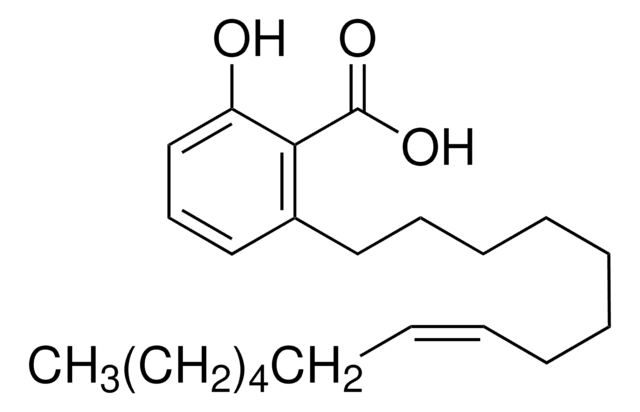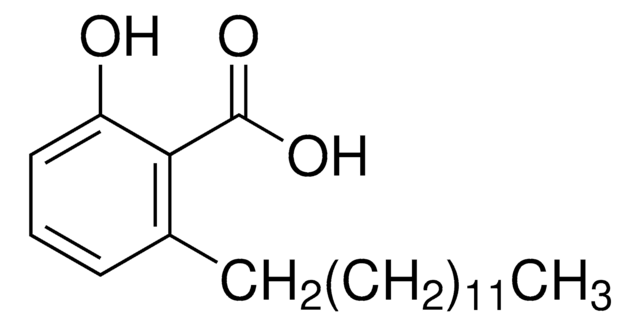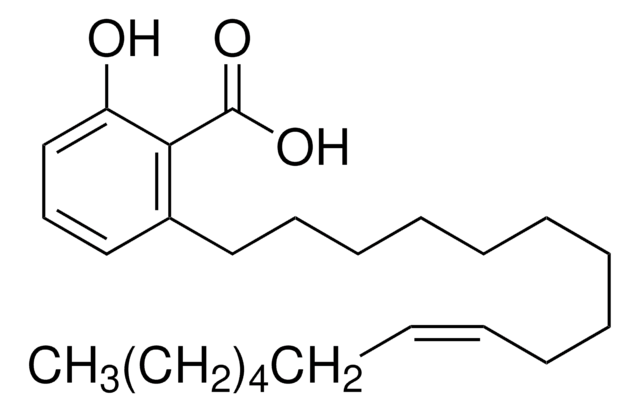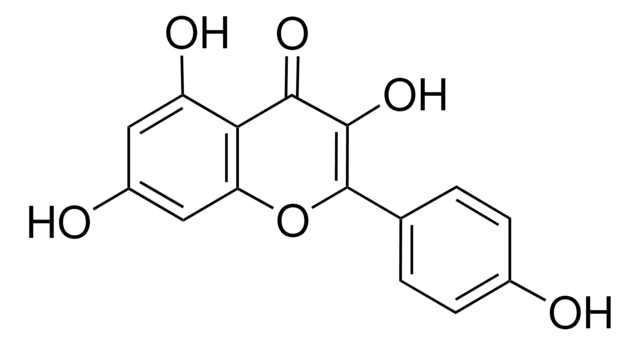Key Documents
55822
Ginkgolic acid C17:1
analytical standard
Synonim(y):
6-[(10Z)-Heptadecenyl]salicylic acid, Ginkgolic acid II
About This Item
Polecane produkty
klasa czystości
analytical standard
Poziom jakości
Próba
≥95.0% (HPLC)
okres trwałości
limited shelf life, expiry date on the label
metody
HPLC: suitable
gas chromatography (GC): suitable
Zastosowanie
food and beverages
format
neat
temp. przechowywania
2-8°C
ciąg SMILES
CCCCCC\C=C/CCCCCCCCCc1cccc(O)c1C(O)=O
InChI
1S/C24H38O3/c1-2-3-4-5-6-7-8-9-10-11-12-13-14-15-16-18-21-19-17-20-22(25)23(21)24(26)27/h7-8,17,19-20,25H,2-6,9-16,18H2,1H3,(H,26,27)/b8-7-
Klucz InChI
MBYNDKVOZOAOIS-FPLPWBNLSA-N
Szukasz podobnych produktów? Odwiedź Przewodnik dotyczący porównywania produktów
Powiązane kategorie
Opis ogólny
Zastosowanie
Hasło ostrzegawcze
Warning
Zwroty wskazujące rodzaj zagrożenia
Zwroty wskazujące środki ostrożności
Klasyfikacja zagrożeń
Skin Sens. 1
Kod klasy składowania
11 - Combustible Solids
Klasa zagrożenia wodnego (WGK)
WGK 3
Temperatura zapłonu (°F)
Not applicable
Temperatura zapłonu (°C)
Not applicable
Środki ochrony indywidualnej
dust mask type N95 (US), Eyeshields, Gloves
Wybierz jedną z najnowszych wersji:
Masz już ten produkt?
Dokumenty związane z niedawno zakupionymi produktami zostały zamieszczone w Bibliotece dokumentów.
Klienci oglądali również te produkty
Nasz zespół naukowców ma doświadczenie we wszystkich obszarach badań, w tym w naukach przyrodniczych, materiałoznawstwie, syntezie chemicznej, chromatografii, analityce i wielu innych dziedzinach.
Skontaktuj się z zespołem ds. pomocy technicznej










